Intermediate and Reservoir Section
Between the top hole and the reservoir section in most cases an intermediate section will need to be drilled. This section consists of more consolidated rocks than the top hole. The deviation angle is often increased in this interval to reach the subsurface target.
An intermediate casing is usually set above the reservoir in order to protect the water bearing, hydrostatically pressured zones from influx of possibly overpressured hydrocarbons and to guarantee the integrity of the well bore above the objective zone.
In mature fields where production has been ongoing for many years, the reservoir may show depletion pressures.
Before continuing to examine the aspects of drilling through the reservoir, remember that the reservoir is the prime objective of the well. If the drilling process has impaired the formation, production may be deferred or totally lost. In exploration wells, the information from logging and testing may not be sufficient to fully evaluate the formation. On the other hand there is considerable scope to improve productivity of the well by carefully selecting the appropriate technology and practices.
7.3. Give English equivalents for the following phrases. Use the text:
Cостоит из довольно неуплотненных осадочных пород; оборудование необходимо выбирать соответственно; основная цель бурения скважины; в устьевой шахте будет размещаться фонтанная арматура; как и в строительной промышленности, пока (кондуктор) не перестанет проникать в грунт; говорят, что скважина была забурена; обычно бурится долотом большого диаметра; для бурения мягких пластов; снижается, чтобы удалить шлам; это буровое долото значительно большего диаметра; если требуется точное направленное бурение; чтобы предотвратить обрушение скважины; необходимо пробурить; угол отклонения часто увеличивается; где добыча продолжается много лет; добыча может снизиться или прекратиться; недостаточной для полной оценки пласта; есть возможность увеличить добычу из скважины.
7.4. Match the words in list A with the words from list B and translate them:
A. 1) total B. a) tools
2) to commence b) drill bit
3) cemented c) field
4) top d) section
5) the rate of e) bearing zone
6) logging f) depth
7) to improve g) collapse
8) water h) penetration
9) mature i) productivity
10) hole j) drilling
11) roller cone type k) “cellar”
12) reservoir l) well
13) exploration m) hole
7.5 Answer the following questions on the text:
1) How many sections does a well trajectory have from the surface to TD?
2) What are the names of the sections? 3) Does the top hole consist of unconsolidated or consolidated sediments? 4) When is a conductor usually piled? 5) What is the ‘Christmas tree’? 6) How is piling of the conductor done? 7) When is the well said to have been spudded? 8) Why do vast quantities of drilled formation have to be treated and removed from the mud circulation system? 9) What is a hole opener? 10) When are hole openers used? 11) Why is an intermediate casing usually set above the reservoir? 12) What may the reservoir show in mature fields? 13) What is the prime objective of the well? 14) When may production be deferred or totally lost? 15) How is it possible to improve productivity of the well?
7.5. Translate the last paragraph of the text in writing.
7.6. Make up sentences using the following words:
a. deflect bit drilling techniques special vertical equipment to the drill Directional
from employed the and several are requires.
b. blades turbine the bit consists bearings of an The upper containing the turbine
section and a lower driving section with mud.
7.7. Render the text “Drilling techniques” in English or in Russian.
UNIT 8 DIRECTIONAL DRILLING
8.1. Remember the meaning of the following words and word-combinations:
directional drilling – направленной бурение
constraint – (зд.) ограничение
because of – из-за
multiple targets – множественные цели
fault – сброс; сдвиг (породы); разлом, трещина
deviate – отклонять, отступать, сворачивать
deviated well trajectory – отклоненная траектория скважины
deviated with tangent – отклоненный по касательной
deflect – отклонять, изменять направление
gradually build up the angle – постепенно наращивать угол (отклонения)
kick off point – точка отклонения, точка изгиба
increase (ant. decrease) – увеличивать(ся), возрастать (ант. уменьшать(ся))
‘dog leg’ – 1. искривление (ствола скважины) 2. резкий изгиб (трубы)
result in – приводить к ч-л
excessive torque and drag – чрезмерный вращающий момент и затяжка
(бурильной колонны)
downhole motor – забойный двигатель
‘whipstock’ – отклонитель
insert – вставлять
‘rathole’ – часть ствола скважины уменьшенного диаметра
jet bit deflection = ‘badgering’ – отклонение с помощью струйного\
гидравлического долота
nozzle – сопло, форсунка
cause – вызывать, становиться причиной
mud motor (positive displacement mud motor) – винтовой забойный двигатель
(ВЗД)
mud turbine – забойный турбинный двигатель
continuous seal – сплошной изолирующий слой
dissect – рассекать, разбивать
motor assembly – узел двигателя
cavity – полость, пустота, каверна
rotational force – вращательная сила
‘bent sub’ – скважинный кривой переводчик
turbine blades – лопатки турбины
bearings – подшипники
diamond bit – алмазное долото
composite bit – композитное долото
full gauge hole – полное замерное отверстие
lost circulation material – экранирующий наполнитель
plug up – закупоривать, затыкать
8.2. Read and translate the text using a dictionary:
DIRECTIONAL DRILLING
For many reasons it may not be possible or desirable to drill a vertical well. There may be constraints because of the surface location. In the subsurface, multiple targets, the shape of the structure, faults, etc. may preclude a vertical well. Figure 10 shows some of the deviated well trajectories frequently used in industry; deviated with tangent to target, S-shaped and horizontal.
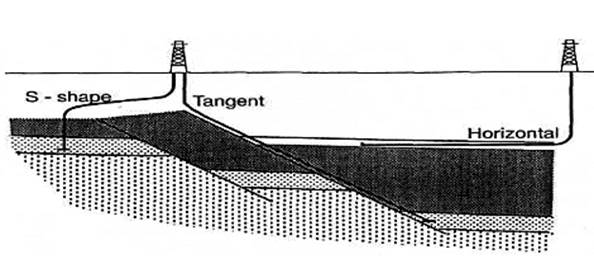
Figure 10. Deviated well trajectories.
Directional drilling requires equipment to deflect the drill bit from the vertical. Initially, angle has to be gradually built up in the desired direction. The kick off point is the depth at which the deviation commences. To build angle several techniques are employed. It is important that the hole angle is not increased or decreased rapidly creating ‘dog legs’ which will result in excessive torque and drag.
Until downhole motors became available a ‘whipstock’ (Fig.11) which is a slightly asymmetric steel joint, was inserted in the drill string.
The assembly is oriented downhole and a ‘rathole’ is drilled which is then enlarged to full bore hole size. The technique is still used in wells where hole conditions, e.g. high temperatures, are unsuitable for downhole motors.
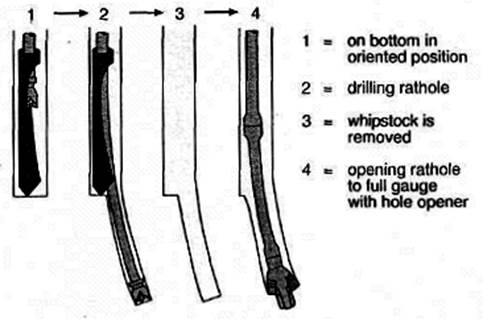
Figure 11. Kicking off with a whipstock.
If a shallow kick off in soft formation is required a technique using jet bitdeflection or ‘badgering’ is employed (Fig. 12). A rock bit is fitted with two small and one large jet. With the bit on bottom and oriented in the desired direction the string is kept stationary and mud is pumped through the nozzles. This causes asymmetric erosion of the borehole beneath the larger jet. Once sufficient hole has been jetted, the drill bit will be rotated again and the new course followed. This process will be repeated until the planned deviation is reached.
In today’s operations a mud motor or a mud turbine are mostly used for directional drilling. Rotary drilling may be carried out between mud motor / turbine drilling i.e. the use of these is often restricted to a certain interval only.
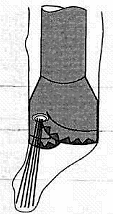
Figure 12. Kicking off by jet bit deflection (‘badgering’).
A mud motor (Fig. 13) is a positive displacement hydraulic motor, driven by the
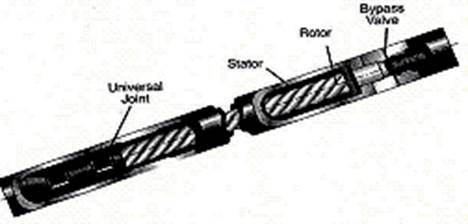
Figure13. Lenghtwise and cross sectional cut through a mud motor.
.
circulated drilling fluid. A continuous seal is formed between the body (‘stator’) and the rotor dissecting the length of the motor assembly into a sequence of wedge shaped cavities. As fluid is pumped through the tool it flows through those cavities creating a rotational force.
To deflect the bit in the desired direction a ‘bent sub’ (with typically to 2° bend) which can be oriented from surface is inserted in the string just above the motor.
An alternative type of downhole mud motor is the mud turbine, (multistage axial flow turbine) which directly drives the bit. The tool consists of an upper section containing the turbine blades and lower section with bearings. As mud is pumped through the upper section the blades are turned. Turbines are designed to rotate at higher speed than the displacement motor. The higher rotation speed requires diamond or composite bits.
Mud motors in general have several advantages over the rotational directional drilling methods. They provide a full gauge hole, dog legs are more likely to be smooth and the penetration rate is usually high. Torque is transmitted more effectively to the bit since the whole drill string is not rotated. This is particularly advantageous in long reach, highly deviated wells. Downhole motors may cause problems if losses occur and lost circulation material needs to be pumped, as this may plug up the motor.
8.3. Give English equivalents for the following phrases. Use the text:
Могут не позволить бурить вертикальную скважину; часто используемый; в желаемом направлении; на которой начинается отклонение; приводить к чрезмерному вращательному моменту и затяжке; слегка асимметричное стальное соединение (стык); вставлять в бурильную колонну; как только образовалось достаточное отверстие; гидравлический двигатель прямого вытеснения; приводимый в движение ч-л; последовательность клинообразных пустот; создавая вращающую силу; другой тип; верхняя часть; нижняя часть; иметь несколько преимуществ над ; скорость проходки обычно высокая; так как вся бурильная колонна не вращается; длинные, сильно отклоненные скважины.
8.4. Match the phrases in column A with their definitions in column B:
A B
1) the kick off point a) a positive displacement hydraulic
motor
2) ‘dog legs’ b) a slightly asymmetrical steel joint
3) jet bit deflection(‘badgering’) c) the depth at which the deviation
commences
4) a mud motor d) the result of a rapid increase or
decrease of the hole angle
5) a mud turbine e) a technique used if a shallow
kick off in soft formation is
required
6) a ‘whipstock’ f) multistage axial flow turbine
which directly drives the bit
8.5. Complete these sentences with a suitable word or phrase:
1) Sometimes it is impossible ……….. a vertical well.
a) to build b) to deflect c) to drill d) to repeat
2) Directional drilling requires special equipment ………… the drill bit from
the vertical.
a) to build b) to deflect c) to drill d) to increase
3) Several techniques are used …………… angle.
a) to build b) to carry out c) to reach d) to repeat
4) …………. is drilled which is later enlarged to full bore hole size.
a) A ’dog leg’ b) A ‘whipstock’ c) ‘Badgering’ d) A ‘rathole’
5) To deflect ………….in the desired direction a ‘bent sub’ is inserted in the
drill string.
a) the bit b) the hole size c) the soft formation d) the bearings
6) The mud turbine consists of an upper section containing the ………… and
lower section with bearings.
a) drilling fluid b) stabilizer c) turbine blades d) bit
7) Mud motors have several ………….. over the rotational directional drilling
methods.
a) problems b) advantages c) disadvantages d) losses
8.6. Answer the following questions on the text:
1) Is it always possible to drill a vertical well? 2) What constraints may preclude a vertical well? 3) What deviated well trajectories are often used in industry? 4) How should the angle be built up in the desired direction? 5) Why is it important to increase or decrease the angle gradually? 6) What do ‘dog legs’ result in? 7) Where is the technique with a ‘whipstock’ still used? 8) Describe this technique. 9) Where is a technique using jet bit deflection employed? 10) How does this technique work? 11) What equipment is mostly used for directional drilling in today’s operations? 12) What is a mud motor driven by? 13) What does the mud turbine consist of? 14) What kinds of bit do turbines require? 15) Why do mud motors have several advantages over the rotational directional drilling? 16) What problems may downhole motors cause?
8.7. Translate the last two paragraphs of the text in writing.
8.8. Make up sentences using the following words:
a. rock wellmay distributed the optimum laterally trajectory of A drilling if provide reservoir or fluids are horizontal.
b. tools data can Petrophysical be out while improved gathering drilling owing carried to the.
8.9. Render the text “Directional drilling” in English or Russian.
UNIT 9 HORIZONTAL DRILLING
9.1. Remember the meaning of the following words and word-combinations:
given the lateral distribution – при условии горизонтального распределения
horizontal well – горизонтальная скважина
build-up rate of angle – скорость увеличения угла
medium radius well – средняя скважина
complete – заканчивать (скважину)
pilot hole – направляющая скважина небольшого диаметра
critical – очень важный, необходимый
relay the subsurface position – передавать информацию о подземном
положении (долота)
in real time – в реальном времени
drill floor – буровая площадка
measurement while drilling (MWD) – определение параметров в процессе
бурения
sonde – 1) зонд, 2) каротажный заряд
via a mudpressure pulse – через давление
marked changes – заметные изменения, заметная разница
corresponding to – соответствующий ч-л, в зависимости от ч-л
lithology – литология
simulate – моделировать
signature – рисунок волны, форма волны
resistivity measurement – измерение удельного сопротивления
steer – регулировать
thin oil rim – тонкая кромка нефти
rely on smth. – опираться на ч-л, зависеть от ч-л
availability – наличие
sampling – образец, проба
9.2. Read and translate the text using a dictionary:
HORIZONTAL DRILLING
Given the lateral distribution of reservoir rock or reservoir fluids, a horizontalwell may provide the optimum trajectory. Figure 14 shows the types of horizontal wells being drilled. The build-up rate of angle is the main distinction from a drilling point of view.
Medium radius wells are preferred since they can be drilled, logged and completed with fairly standard equipment. The horizontal drilling target can be controlled within a vertical window of about 2m. To target the horizontal section with the required accuracy a pilot hole may be drilled first for depth control. Accurate directional surveys are critical for the optimum positioning of the well.
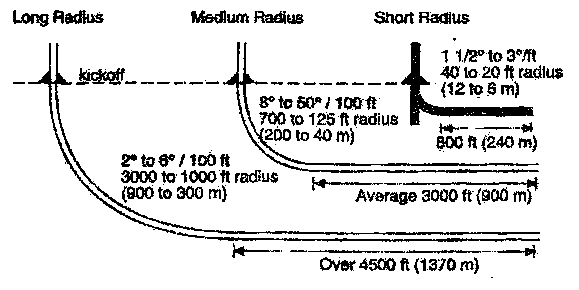
Figure 14. Horizontal well.
The success of horizontal wells was largely dependent on the development of tools which relay the subsurface position of the drill bit in real time to the drill floor. Improvements in this technology have greatly improved the accuracy with which well trajectories can be targeted. Measurement while drilling(MWD) is achieved by the insertion of a sonde into the drill string close to the bit. Data transmission is via a mudpressure pulse which is translated through a decoder into an electric signal. Initially providing only directional data, the tools have been improved to the point where petrophysical data gathering (gamma-ray, resistivity, density and porosity) can be carried out while drilling.
Most reservoirs are characterised by marked lateral changes in reservoir quality corresponding to variations in lithology. Computing tools now becoming commercially available allow the modelling of expected formation responses "ahead of the bit". This is possible in areas where a data set of the formations to be drilled has been acquired in previous wells. The expected gamma ray (GR) and density response is then simulated and compared to the corresponding signature picked up by the tool. Thus, in theory, it -is possible to direct the bit towards the high quality parts of the reservoir. Resistivity measurements enable the driller to steer the bit above a hydrocarbon water contact, a technique used, for example to produce thin oil rims. These techniques, known as geo-steering, are rapidly developing and are increasingly being applied to field development optimisation. Geo-steering also relies on the availability of high quality seismic and possibly detailed palaeontological sampling.
9.3. Give English equivalents for the following phrases. Use the text:
Основное отличие; относительно стандартным оборудованием; может сначала быть пробуренной; точные съемки; инструмент (оборудование); с помощью декодера; до такой степени, что; плотность и пористость; в процессе бурения; качество коллектора; вычислительное оборудование; ожидаемый отклик (реакция) пласта; пласты, которые необходимо пробурить; теоретически; направлять долото; все больше используются для; если возможно; подробные палеонтологические образцы.
9.4. Complete the following sentences using suitable phrases and translate sentences into Russian:
a) directional surveys b) petrophysical data gathering
c) medium radius d) reservoir quality
e) to direct the bit f) a pilot hole
g) the accuracy h) computing tools
1) …………. wells are sometimes preferred because they can be drilled, logged
and completed with standard equipment.
2) To target the horizontal section accurately …………….. may be drilled first for
depth control.
3) Accurate …………… are important for the optimum positioning of the well.
4) Improvements in technology have improved …………….. with which well
trajectories can be targeted.
5) The tools have been improved so that …………….. can be carried out
while drilling.
6) Most reservoirs are characterized by marked lateral changes in …………… .
7) …………….. allow the modeling of expected formation responses ‘ahead of
the bit’.
8) It is possible …………….. towards the high quality parts of the reservoir.
9.5. Answer the following questions on the text:
1) When may a horizontal well provide the optimum trajectory? 2) What radius wells are preferred and why? 3) Within what window can the horizontal drilling target be controlled? 4) What may be drilled to target the horizontal section? 5) What was the success of horizontal wells largely dependent on? 6) How is measurement while drilling (MWD) achieved? 7) How is data transmission achieved? 8) What data did the tools provide initially? 9) What kind of data do the tools allow to gather now? 10) What are most reservoirs characterized by? 11) What does the reservoir quality depend on? 12) How is it possible to direct the bit towards the high quality parts of the reservoir? 13) What measurements enable the driller to steer the bit above a hydrocarbon water contact? 14) What is the name of this technique? 15) What does geo-steering rely on?
9.6. Translate the second paragraph of the text in writing.
9.7. Make up sentences using the following words:
a. ERD standard equipped usually and better wells rigs in comparison heavier wells require with.
b. economics higher more of ERD are overall may Though be project favourable costs.
9.8. Render the text “Horizontal drilling” in English or Russian.
UNIT 10 EXTENDED REACH DRILLNG (ERD)
10.1. Remember the meaning of the following words and word-combinations:
extended reach drilling - бурение с увеличенным отклонением от оси скважины
horizontal / lateral displacement – смещение по горизонтали
vertical depth – вертикальная глубина
ratio – отношение, пропорция
because of = due to – из-за ч-л
engineering – ( зд.) инженерное искусство
consider – (зд.) рассматривать (необходимость бурения)
marginal accumulation – небольшая залежь / месторождение
reduction – сокращение , уменьшение
deviation – отклонение
expose the drill string to smth. – подвергать бурильную колонну ч-л
drag and torque – сопротивление и крутящий момент
cutting removal – удаление бурового шлама
cementing of casing – цементирование обсадной колонны
top drive system – система привода от верхнего двигателя
steerable downhole motor – управляемый забойный двигатель
conventional well – обычная скважина
advance – (зд.) ускорять (добычу нефти)
harbour – гавань
coastline – береговая линия, побережье
bay – залив
offshore – (зд.) на море
subsea satellite development – разработка автономной подводной скважины
10.2. Read and translate the text using a dictionary:
EXTENDED REACH DRILLING (ERD)
An extended reach well is loosely defined as having a horizontal displacement of at least twice the vertical depth. With current technology a ratio of over 4 (horizontal displacement /vertical depth) can be achieved.
ERD wells are technically more difficult to drill and because of the degree of engineering required for each well the term ‘designer well’ is frequently used.
Extended reach drilling (ERD) will be considered
• where surface restrictions exist
• where marginal accumulations are located several miles from existing
platforms
• where ERD allows a reduction in the number of platforms required
The high deviation (often up to 85°) and the long horizontal displacement expose the drill string to extreme drag and torque. Hole cleaning (cutting removal) and cementing of casing is more difficult due to the increased effect of gravity forces compared to low angle wells. Thus ERD wells usually require heavier and better equipped rigs compared to standard wells, and take longer to drill. Top drive systems are routinely employed in combination with steerable downhole motors.
Not surprisingly, costs are several times higher than conventional wells. Nevertheless, overall project economics may favour ERD over other development options. For example, BPAmoco has developed the offshore part of the Wytch Farm Oilfield (which is located -under Poole Harbour in Dorset, UK) from an onshore location. The wells targeted the reservoir at a vertical depth of 1,500 meters with a lateral displacement of over 10,000 meters (Fig. 15). The alternative was to build a drilling location on an artificial island in Poole Bay. ERD probably saved a considerable amount of money and advanced first oil by several years.
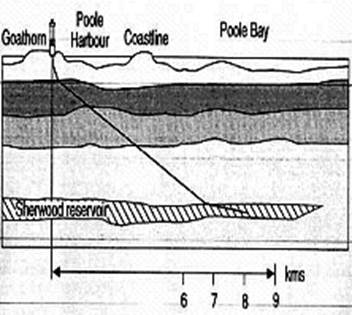
Figure 15. Extended reach drilling (BP, Wytch Farm).
Offshore, subsea satellite development may be a viable alternative to ERD wells.
10.3. Give English equivalents for the following phrases. Use the text:
Можно приблизительно определить как; с использованием современных технологий; необходимое для каждой скважины; ограничения на поверхности; небольшие залежи; количество необходимых платформ; удаление бурового шлама; цементирование обсадной колонны; требуют более тяжелые буровые вышки с лучшим оборудованием; по сравнению с ; обычно используются вместе с ; затраты в несколько раз выше; тем не менее; может поддерживать (выступать за); по другим показателям; смещение по горизонтали; искусственный остров; экономить значительные суммы денег; реальная альтернатива.
10.4. Match the words in A and B to make word combinations. Translate them:
A B
1) extended reach a) deviation
2) horizontal / lateral b) restrictions
3) vertical c) downhole motor
4) surface d) casing
5) high e) displacement
6) extreme f) well
7) steerable g) depth
8) cutting h) drilling
9) conventional i) drag and torque
10) cementing of j) removal
10.5. Complete the sentences using suitable prepositions: for (1), with (3),
over (1), of (7) , to (3), at (1), in (2), by (1)
1) The term ‘designer well’ is often used because ……… the degree …….engineering necessary ……. an ERD well.
2) ……. current technology a ratio of …….. four can be achieved.
3) ERD allows a reduction ……… the number …….. platforms required.
4) The high deviation and the long lateral displacement expose the drill string ………. extreme drag and torque.
5) Cementing ……. casing is more difficult due …… the increased effect …… gravity forces.
6) ERD wells require heavier and better equipped rigs compared …… standard wells.
7) Top drive systems are employed ……. combination ……… steerable downhole motors.
8) The wells targeted the reservoir …….. a vertical depth of 1,500 meters …… a lateral displacement …… over 10,000 meters.
9) ERD saved a considerable amount …….. money and advanced first oil …… several years.
10.6. Answer the following questions on the text:
1) How can ERD wells be defined? 2) What ration in ERD well can be achieved with current technology? 3) Why are ERD wells frequently called ‘designer wells’? 4) When are ERD wells usually drilled? 5) Why is hole cleaning and cementing of casing more difficult in such wells? 6) What wells does it take longer to drill : conventional or ERD? 7) ERD well costs are several times higher than conventional wells, aren’t they? 8) Give an example of an ERD well drilled from an onshore location. 9) What can be a viable alternative to ERD wells offshore?
10.7. Make up sentences using the following words:
a. A tubing made of viable high-grade is coiled drilling a seamless employing alternative tubular steel.
b. more hole weighs to tons A slim and its small size 5 makes from exploration economic 7 rig.
10.8. Render the text “Extended Reach Drilling” in English or in Russian.
